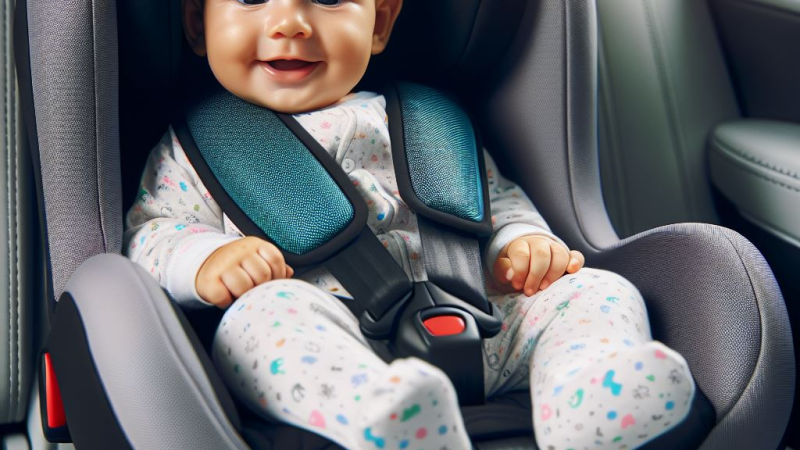Complete Guide to Baby Car Seats: Weights, Measurements, and Everything You Need to Know
Choosing the right car seat for your baby is one of the most important decisions you'll make as a parent. It's not just about safety, but also about comfort and convenience for both you and your little one. In this guide, we provide you with all the updated information on the different types of baby car seats, as well as a comprehensive chart of weights and measurements to help you make the right choice.
Types of Baby Car Seats
Before diving into weights and measurements, it's important to understand the different types of car seats available on the market. Each type is designed to fit your baby's needs based on their age, weight, and height.
1. Group 0+ Car Seat (Newborns to 13 kg)
- Recommended Age: From birth to about 12-15 months.
- Position: Rear-facing (safer for newborns).
- Features: Typically lightweight, portable, and easy to install. Many models include a base for easier installation.
- Example Maximum Weight: 13 kg.
2. Group 1 Car Seat (9 to 18 kg)
- Recommended Age: From 9 months to about 4 years.
- Position: Forward-facing, with a 5-point harness system for secure protection.
- Features: Provides good lateral support and impact protection.
- Example Maximum Weight: 18 kg.
3. Group 2 Car Seat (15 to 25 kg)
- Recommended Age: From 3 to 7 years.
- Position: Forward-facing.
- Features: Often includes an adjustable backrest, and some models come with a removable cushion or recline feature.
- Example Maximum Weight: 25 kg.
4. Group 3 Car Seat (22 to 36 kg)
- Recommended Age: From 6 to 12 years.
- Position: Forward-facing.
- Features: Typically a booster seat with a backrest to ensure the seatbelt fits correctly.
- Example Maximum Weight: 36 kg.
5. Combination Car Seats (Groups 0+/1/2/3)
- Recommended Age: These seats combine Groups 0+, 1, 2, and 3, making them a long-term option.
- Features: Adjustable as your baby grows, offering long-term value. Can be used from birth up to about 12 years old.
- Example Maximum Weight: Depending on the model, they can go up to 36 kg.
Weights and Measurements Guide for Baby Car Seats
It's essential to consider both your baby's weight and the seat's dimensions when selecting a car seat. Below is a table with the standard measurements and weight limits to help you make an informed decision.
| Car Seat Type | Child's Weight Range | Age Range | Average Seat Weight | Seat Measurements (W x H x D) |
|---|---|---|---|---|
| Group 0+ | 0 - 13 kg | 0 - 12 months | 3 - 5 kg | 44 x 55 x 65 cm |
| Group 1 | 9 - 18 kg | 9 months - 4 years | 6 - 8 kg | 45 x 60 x 55 cm |
| Group 2 | 15 - 25 kg | 3 - 7 years | 7 - 10 kg | 48 x 70 x 45 cm |
| Group 3 | 22 - 36 kg | 6 - 12 years | 5 - 6 kg | 47 x 75 x 43 cm |
| Combination 0+/1/2/3 | 0 - 36 kg | 0 months - 12 years | 10 - 15 kg | 45 x 75 x 45 cm |
Note: Seat measurements may vary slightly depending on the model and brand. Be sure to check the manufacturer's specifications before making your purchase.
FAQ: Frequently Asked Questions about Baby Car Seats
1. When should I change my baby's car seat?
Each car seat is designed for a specific weight and age group. You should change it when your baby exceeds the recommended weight or height for that group. Additionally, if the seat is over 6 years old or has been involved in an accident, it’s important to replace it.
2. Is it necessary to use a car seat on all trips?
Yes. It's mandatory and essential for your baby's safety. Even for short trips, a car seat provides crucial protection in the event of an accident.
3. How do I install a car seat correctly?
Car seats should be installed according to the manufacturer's instructions. Most current models feature Isofix installation systems or seatbelt installation, but always refer to the manual to ensure proper and secure installation.
4. What does the Isofix system mean?
Isofix is a car seat anchoring system that allows for faster, easier, and safer installation. It uses fixed attachment points in the car to eliminate common installation errors and ensure your baby’s safety.
5. When can I switch to a Group 1 seat (forward-facing)?
You can start using a Group 1 seat when your baby weighs at least 9 kg and their head is below the upper limit of Group 0+. However, it's recommended to continue using rear-facing seats for as long as possible for safety reasons.
Conclusion
Choosing the right car seat for your baby is essential for their safety and well-being. With this guide, you now have up-to-date information on the types of car seats, their measurements, weight limits, and frequently asked questions to help you make an informed decision.
If you still have questions, always consult with a specialist or the staff at your eCommerce store for personalized recommendations. Your baby deserves the best in safety and comfort!






